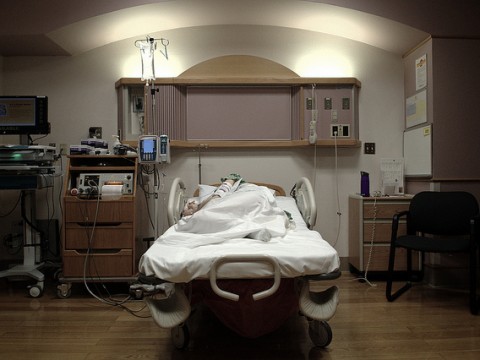Many Mothers Wonder About the Hospital
Many mothers-to-be wonder what the common hospital procedures are during labor and childbirth. While birth is a natural process, the staff at the hospital will want to ensure that both the mother and baby are doing well. Make sure to voice your opinions and concerns during any of the procedures, so the staff knows your wishes and can help alleviate any fears you have.

When You First Arrive
Usually, a nurse will take you to a special room for women who have just arrived at the hospital. The exam will start by the nurse asking you questions about what has happened so far, such as how frequently the contractions are coming and if your water has broken. She or he will monitor your blood pressure, temperature and pulse. The nurse may also request a urine sample and will check to see how far you are dilated through an internal examination. You will be hooked up to a monitoring system that checks for frequency and strength of contractions. If the contractions are not strong yet or you have not dilated, you may be sent home until labor progresses further. If the nurse finds that you are in active labor, you will be transferred to a labor and delivery room.
What Happens In the Labor and Delivery Room?
Once it is confirmed that you are in labor, the nurse will call your physician to make him or her aware of the situation. While you wait for the physician to arrive, the nurse will hook you up to an electronic monitoring system. The system consists of two belts with sensors that are placed around your stomach. One sensor monitors the baby’s heart rate and the other monitors contractions. You may be asked to remain in bed while you are monitored. You can request that the monitors be removed, so you can get up and move around. The nurse can also monitor the baby with a doppler or fetoscope. If the nurse has difficulty locating the baby’s heart tones, she or he may use an internal monitoring system. The nurse will place a small electrode onto the baby’s scalp. Internal monitoring can only be done once the cervix has begun to dilate and the water has broken.
The nurse will also attach an IV line into your wrist or hand. If you require fluids or medications during labor, it can quickly be administered through the IV line. Discuss your birth plan and wishes for delivery with your nurse. If you have religious beliefs or special requests, make sure to tell the staff on duty.
During labor, the nurse will routinely check on you. If you are having an unmedicated birth, the nurse may offer suggestions for pain relief techniques. If you choose to have an epidural, the nurse will call the anesthesiologist to come to your room and perform the procedure. The nurse may offer other pain relief medications that can be injected through the IV line.
What Happens During Delivery?
Once your physician arrives, he or she will check your progress and discuss what is going to happen next. If necessary, the physician may suggest you walk around, administer Pitocin or break the bag of waters to stimulate contractions. Once you have dilated to 10 centimeters, the nurses and your physician will prepare the room for delivery.
Thank-you for reading this article. Please feel free to leave your thoughts in the comment section below.
References: